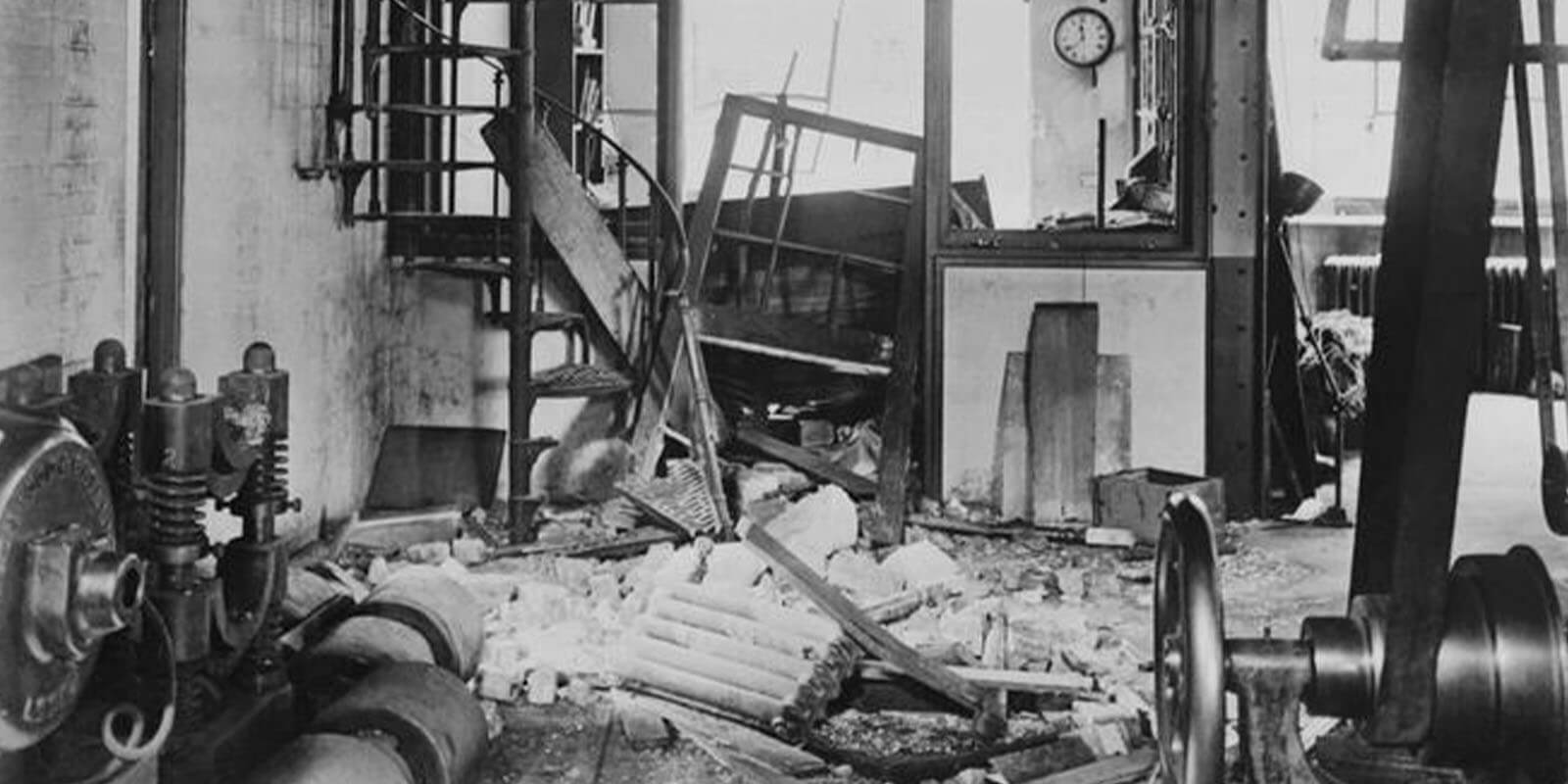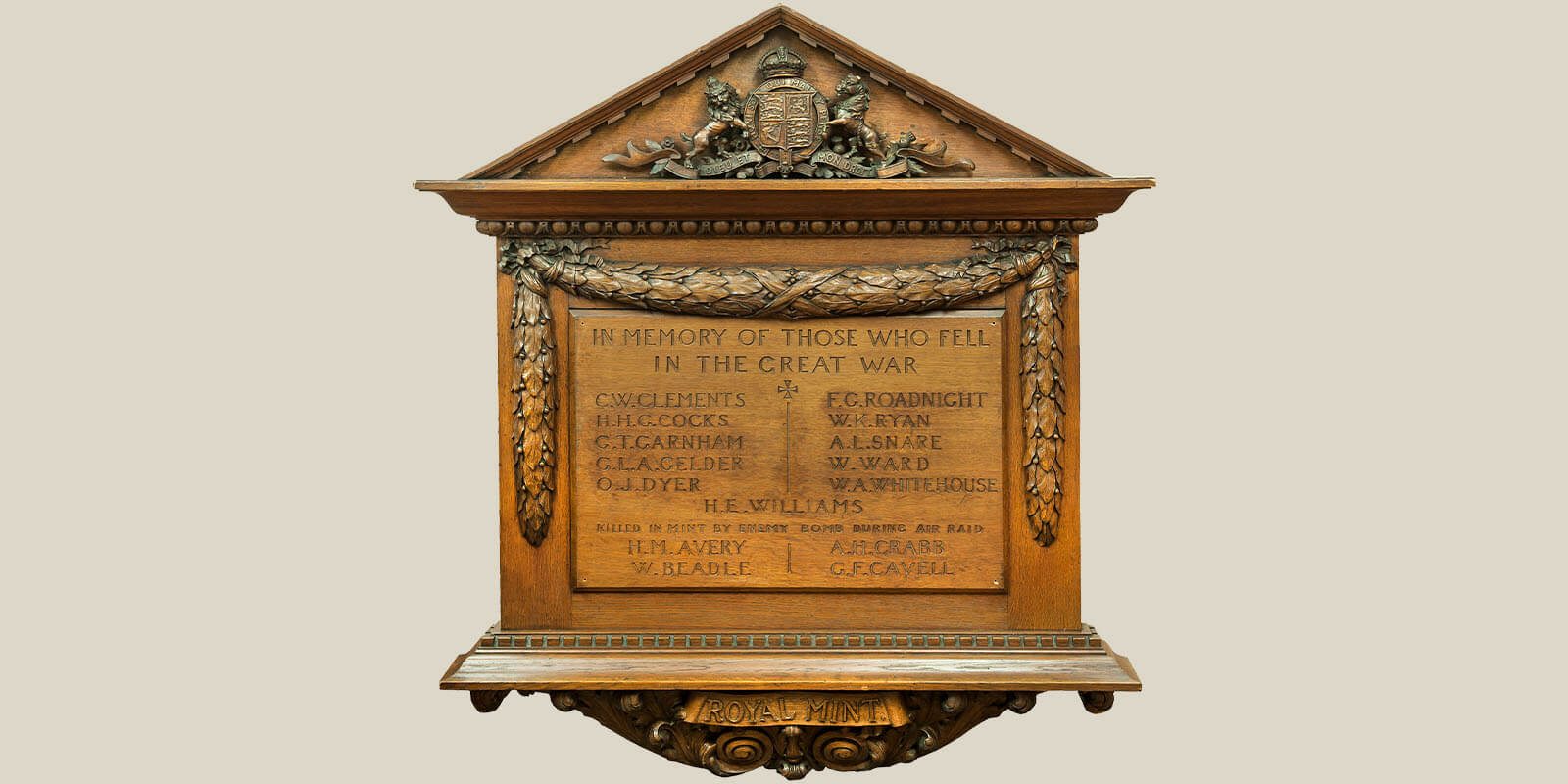The First World War impacted society at every level, including coinage and The Royal Mint itself.

By 1914, The Sovereign was firmly part of the United Kingdom´s currency. Its value of 20 shillings was more than the average weekly wage and it was considered the epitome of refinement and success. A model of mass-produced accuracy that was circulated throughout the British Empire, The Sovereign became known as the ‘chief coin of the world´. With coins worth £100 million in circulation, this was a golden age for The Sovereign, but the storm clouds of war were gathering.
Germany’s imperial ambitions upset the European balance of power, leading France to form an alliance with Russia. Feeling surrounded, Germany allied itself to the Austro-Hungarian Empire and Italy. Concerned about German domination of the continent and the build-up of its battle fleet, the United Kingdom moved closer to France and Russia, long seen as potential enemies. The assassination of Archduke Franz Ferdinand of Austria in 1914 amplified political tensions and this tangle of alliances turned a crisis in the Balkans into a world war.
Total war demanded a unity of purpose and great sacrifice. Industry and agriculture were mobilised, but producing the munitions and food needed at the frontline was ruinously expensive. Every conceivable tool was needed to fund the war effort, including gold in private hands. Soon after war was declared, posters appeared with the message ‘The British Sovereign will win’, urging people to hand in their gold Sovereigns in exchange for Treasury notes. Production of Sovereigns dropped dramatically and by the summer of 1915 gold was no longer a regular part of national coinage.
Resources at The Royal Mint were diverted to munitions work, whilst production of medals reached unprecedented levels. Long hours were the norm and many workers were also called up to fight. In some cases, such as that of George Gelder, a laboratory attendant in the Assay Department, their specialist expertise was particularly useful. Serving as a Corporal in the Royal Engineers, he worked as a chemist in the 188th Special Company, one of four companies responsible for the UK’s chemical war effort. Sadly, he never returned and in such a tightly knit community the death of colleagues in action was acutely felt.

On 13 June 1917, The Royal Mint found itself in the firing line during the first daytime air raid on London. Unlike earlier Zeppelin raids, 20 high-flying Gotha bombers carried out this attack. They began their bombardment in East Ham and the Albert Dock before continuing west and dropping 72 bombs in two minutes within a one-mile radius of Liverpool Street Station. The planes then split into two groups, one of which headed south and bombed The Royal Mint’s factory buildings.
By 1917, production of Sovereigns at The Royal Mint at Tower Hill had ceased entirely but branch mints overseas continued to strike the coin until 1932, with the last issue coming from Pretoria, South Africa. The war might have ended The Sovereign’s role as a circulating coin but its status was not diminished. Trusted and respected all over the world, it was revived as a bullion coin in 1957.
Be Inspired

D-DAY: AN ASSAULT ON THE ATLANTIC WALL
A Date to Remember Forever
Explore Coinage During Conflict
Discover More
Dates and Key Battles of the Second World War
Discover More
Battle of Waterloo
Discover More